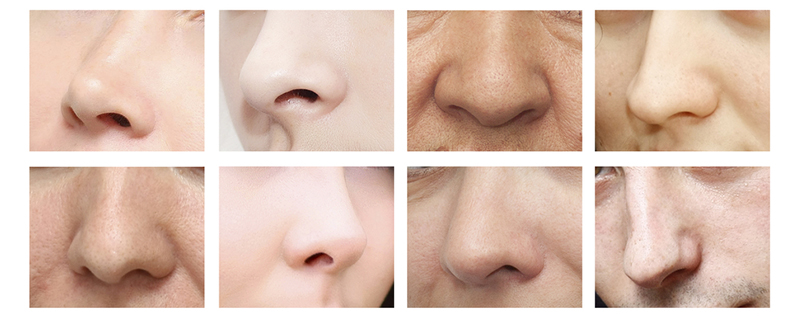Today’s rhinoplasty patient has a sophisticated sense of nasal aesthetics and the factors (size, shape, balance) that go into successful nasal surgery. The delivery of poor surgical results and elevated expectations has resulted in an increase in the number of revision rhinoplasty procedures being performed today.
There are several reasons why rhinoplasty can fail. The most common reason is technical error during the surgery due to a lack of skill and expertise on the part of the surgeon. Many aesthetic surgeons perform cosmetic surgery throughout the body, but only a few are specialists in the nose and face. Limited experience can translate into improperly placed incisions, excessive removal of cartilage and bone of the nasal bridge, and aggressive removal of nasal tip cartilages.
These surgical mis-steps can cause poor structural support within the nose, leading to a nose that looks unnatural and awkward, and doesn’t function well either. Revision rhinoplasty can correct those problems.
Revision Rhinoplasty: Perfecting Form & Function
If revision rhinoplasty were an Olympic sport, surgeons would get extra points for its high level of difficulty. Revision rhinoplasty is considered one of the most complex facial plastic surgery procedures to perform; it is both technically and artistically demanding.
Often the nasal cartilages have been removed, and scar tissue has replaced much of the structural framework. The remaining nasal cartilages are often warped or misshapen. The nasal structure must be recreated using cartilage grafts to mimic the framework of a virgin, or non-operated, nose. This creates special challenges for a revision rhinoplasty surgeon.
The reconstruction must be exact and flow in a 3-dimensional fashion to give the appearance of a beautiful nose that will balance the patient’s facial features. Scarred and altered tissues must be placed back in their proper place by re-arranging the nasal framework. All this must be done while combating the distorting effects of skin and soft tissues that have been scarred by the previous poor surgical result.
The structure must be strong enough to withstand the tremendous scar formation forces that are sometimes present during the healing period of previously operated noses. The function of the nose, breathing, must be maintained or, in many times, repaired. This is done by strengthening those elements of the nose that are responsible for keeping the air passages open.
For all these reasons, it is crucially important to select a highly qualified surgeon who is experienced in secondary rhinoplasty when the revision of a previous nasal surgery is required.

